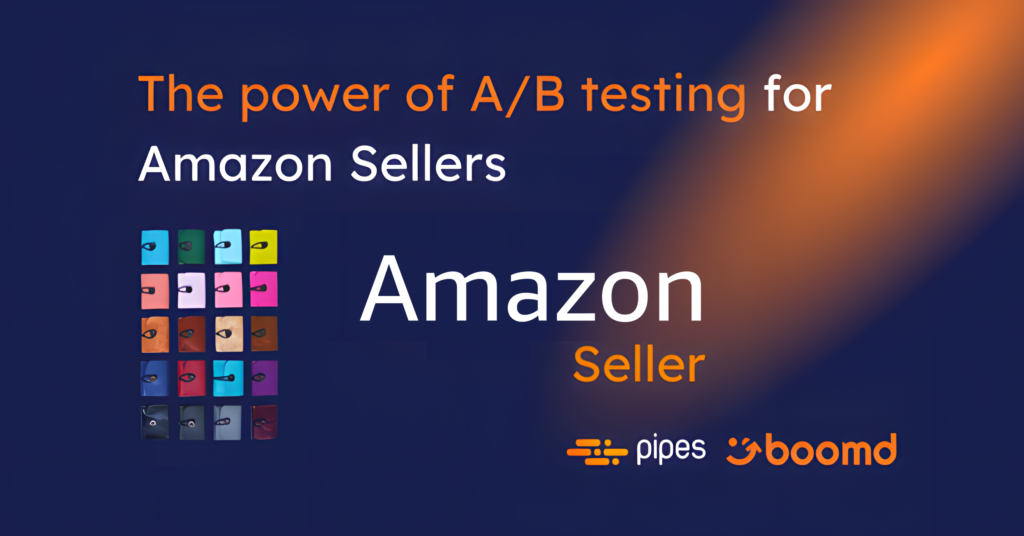Optimising sales on Amazon: unleashing the power of A/B testing as an Amazon Seller or Vendor
As an Amazon Seller or Vendor, standing out from the competition and maximising sales is crucial for success in the highly competitive online marketplace. To achieve these goals, leveraging data-driven strategies is essential. One powerful tool at your disposal is A/B testing. In this article, we will explore what A/B testing means, why it is useful, how you can implement it on Amazon, and how the data collected from A/B testing, with the support of Data Virtuality Pipes software, can inform future sales strategies.
Understanding A/B testing
A/B testing, also known as split testing, is a method used to compare two versions of a webpage, advertisement, or any other marketing element to determine which one performs better. The objective is to identify the version that generates higher engagement, conversions, or sales by presenting different variants to different audiences simultaneously.
Why is this an important concept on Amazon? What benefits might you see if executed correctly?

Increasing Conversion Rates
One of the primary benefits of A/B testing is the ability to optimise conversion rates. By testing different variations of product listings, such as product titles, images, bullet points, or descriptions, Sellers and Vendors can understand which elements resonate better with their target audience and drive more sales.
Enhancing Customer Experience
A/B testing allows Sellers and Vendors to experiment with different features, layouts, or designs of their Amazon store pages or product detail pages. By analysing how variations impact user behaviour, Sellers can create a seamless and user-friendly shopping experience, resulting in higher customer satisfaction and increased conversions.
Optimising Pricing Strategies
Pricing plays a crucial role in purchase decisions. A/B testing enables Sellers and Vendors to experiment with different price points, discounts, or promotional offers to determine the most effective pricing strategy that attracts customers while maximising profitability.
Implementing A/B testing on Amazon
So how do you go about setting up A/B testing on Amazon? Here’s a summary checklist to help you get started:
Setting Clear Objectives
Before conducting A/B tests, it is important to define clear objectives. These could include improving click-through rates, increasing add-to-cart conversions, or enhancing overall sales. Establishing measurable goals helps focus the testing process and ensures actionable insights are obtained.
Identifying Testable Variables
To effectively conduct A/B tests on Amazon, it is essential to identify the variables that can be tested. These variables may include product titles, product images, product descriptions, pricing, or even fulfilment options. It is important to test one variable at a time to accurately measure its impact on performance. It is essential to ensure you have captured these data points before starting the testing period, so you have accurate comparison points.
Creating Test Variations
Using Amazon’s Seller Central or Vendor Central, Sellers and Vendors can create and manage test variations. Amazon’s A/B testing tools enable you to make changes to specific elements, such as titles or images, and present these variations to different audiences in real-time. Amazon will take care of when leaving you to analyse the data once the test is completed. Some data will be presented by Amazon after the period you set (for example, 4 weeks).
Defining Sample Size and Duration
To ensure statistically significant results, it is crucial to determine an appropriate sample size for each variation. Additionally, the duration of the test should be sufficient to gather enough data to make informed decisions. Amazon’s A/B testing tools provide insights into sample sizes required for accurate results.
Monitoring and Analysing Results
Throughout the test duration, Sellers and Vendors need to closely monitor the performance of each variation. Metrics such as conversion rates, click-through rates, and sales data should be analysed to determine the impact of each variable on customer behaviour and sales performance. All of this information can be extracted and reported on via Data Virtuality Pipes, for all marketplaces, and is also presented by Amazon at the end of the A/B test period.
Utilising A/B testing data for future sales strategies
Data-Driven Decision Making
The data collected from A/B testing provides valuable insights into customer preferences and behaviour. By analysing the results, Sellers and Vendors can make informed decisions regarding product positioning, pricing, content optimization, and overall sales strategies.
Continuous Improvement
A/B testing is an iterative process that allows Sellers and Vendors to continuously improve their offerings. By leveraging data and implementing the insights gained from A/B tests, Sellers can refine their product listings, enhance customer experience, and ultimately increase sales over time.

Scaling Success
Successful A/B tests can serve as a blueprint for scaling sales on Amazon. By identifying winning variations, Sellers and vendors can implement those changes across their entire product range, driving consistent improvements in sales and customer engagement.
Conclusion
A/B testing is a powerful tool that empowers Amazon Sellers and Vendors to optimise their sales strategies, enhance customer experience, and increase conversions. By testing and refining various elements of their product listings, pricing, and store pages, Sellers can gather valuable data that informs future decision-making and drives sales growth. Embracing A/B testing as a core practice can help sellers stay competitive in the dynamic Amazon marketplace and unlock their business’s full potential.
Data Virtuality Pipes, in partnership with a specialist Amazon agencies like Boomd, plays a crucial role in helping Sellers and Vendors analyse the data from Amazon, and make informed decisions based on that data. By integrating Amazon data with Data Virtuality Pipes, Sellers can monitor performance metrics, identify trends and patterns, enhance competitive analysis, and automate reporting processes!
About Boomd
A full-service Amazon agency, with a team of Amazon Vendor, Seller and data analytics experts, helping brands, manufacturers and distributors sell profitably on all Amazon marketplaces worldwide. Follow them on LinkedIn.
Title: The power of A/B testing on Amazon
Series: Amazon Sellers
Author: Nick Turner, Co-Founder, Boomd Amazon Agency
Date: July 2023







